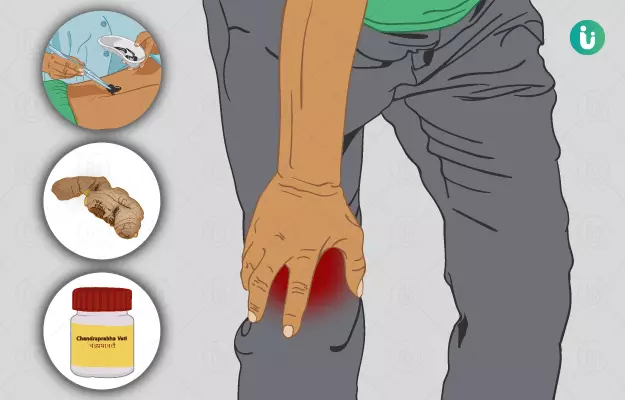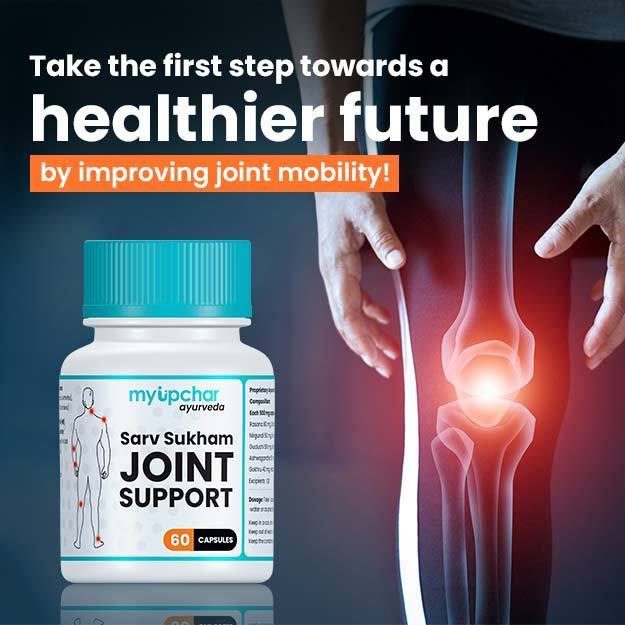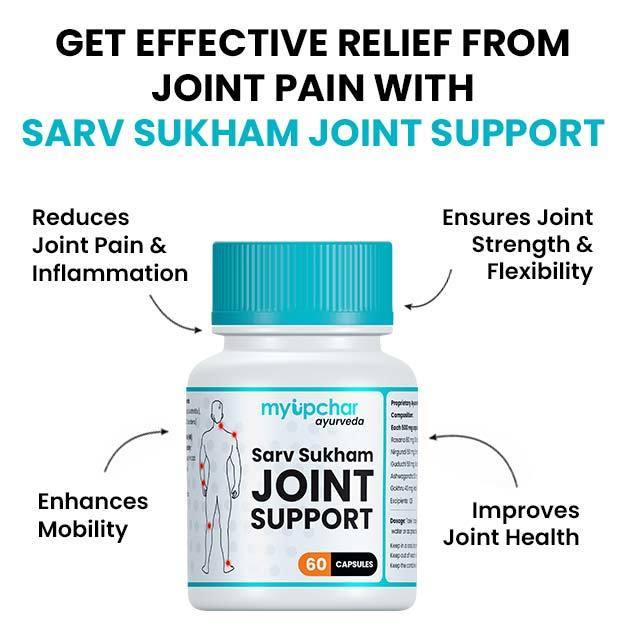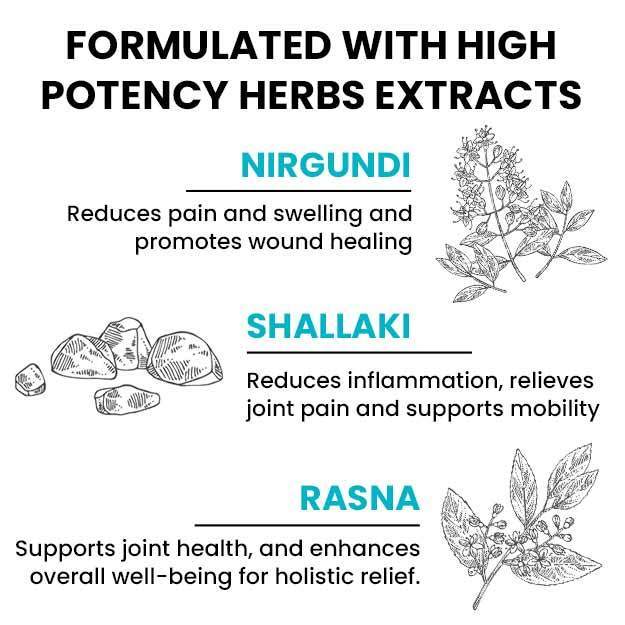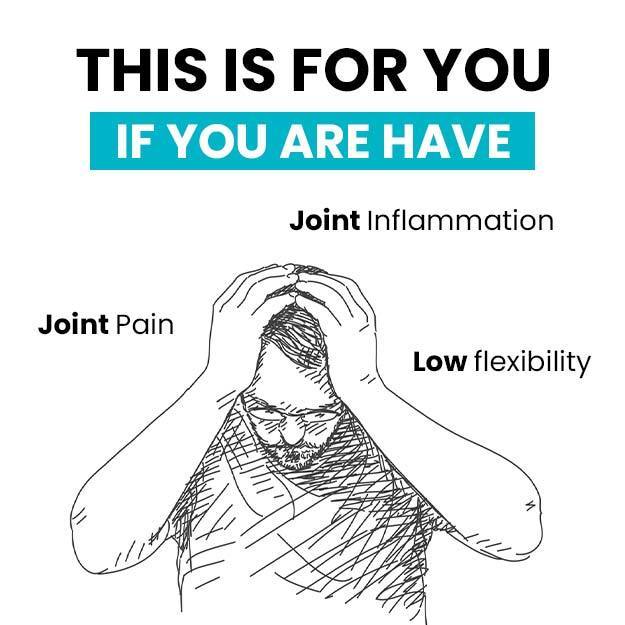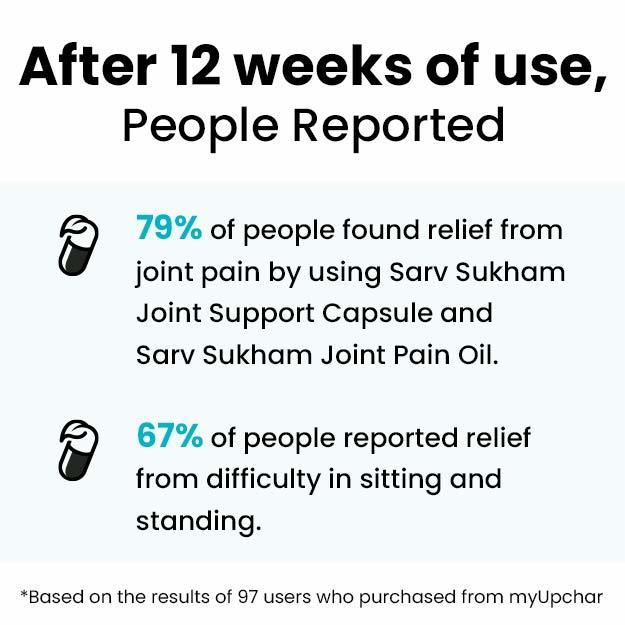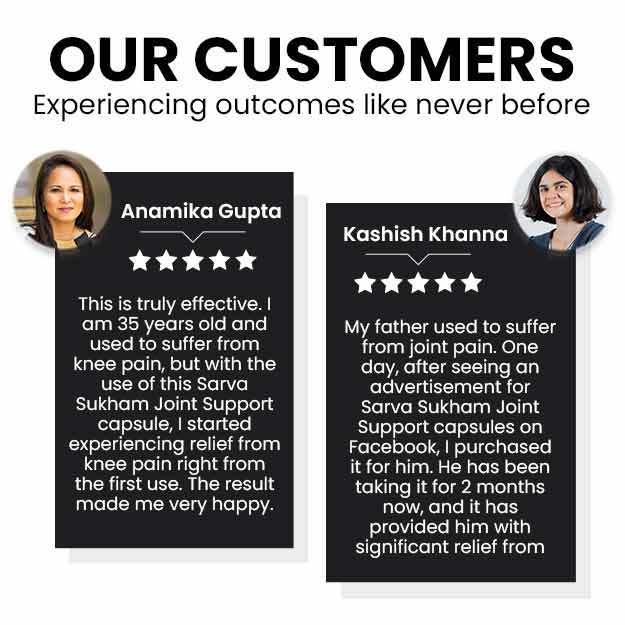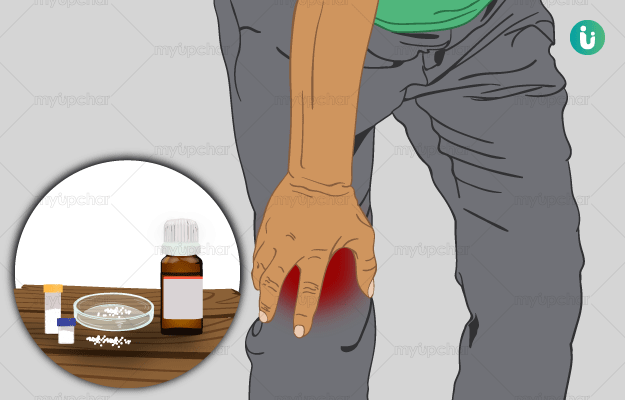Knee pain, also called janu shula in Ayurveda, is a common symptom that may occur due to a disease, injury or excessive exercise. It may begin as mild discomfort and worsen if neglected. The most common causes of knee pain are sciatica and arthritis.
Depending on the underlying cause, Ayurvedic treatment of knee pain includes therapies such as nidana parivarjana (avoiding the causes), raktamokshana (bloodletting), swedana (sudation or sweat therapy), virechana (purgation), basti (enema), lepa (coating the affected body part with medications) and agni karma (thermal cauterisation). Herbs and medicines used for the treatment of knee pain are ashwagandha (Indian ginseng), adraka (ginger), guggulu (Indian-bdellium tree), guduchi (heart-leaved moonseed), eranda (castor), yogaraja guggulu, simhanada guggulu, chandraprabha vati and kaishora guggulu.
- Ayurvedic view of knee pain
- Ayurvedic treatment for knee pain
- Ayurvedic herbs and medicines for knee pain
- Dietary and lifestyle changes for knee pain patient as per ayurveda
- How effective are ayurvedic medicines and treatments for knee pain
- Side effects and risks of ayurvedic medicine and treatments for knee pain
- Takeaway
Ayurvedic view of knee pain
Ayurveda describes various causes of knee pain such as:
- Sandhigata vata (osteoarthritis): It occurs due to vitiation of vata dosha and accumulation of vata in bones and joints. Osteoarthritis primarily affects joints that bear body weight and are in constant use such as the knee joint. Common symptoms of osteoarthritis include pain, stiffness, inflammation and swelling of the affected joint.
- Amavata (rheumatoid arthritis): It occurs due to formation of ama by poor digestion. This ama accumulates in joints, leading to pain, inflammation and stiffness. When ama accumulates in knee joint and vitiates the vata dosha at this site, it leads to knee pain.
- Vata rakta (gout): Vitiation in vata dosha and rakta dhatu are the underlying causes for vata rakta. Most common symptoms of gout include excruciating pain, inflammation and swelling in the affected joint.
- Gridhrasi (sciatica): Sciatica mainly affects the lower back and lower limbs. It occurs due to aggravation of vata and is characterised by radiating pain, which travels downward from the lower back to hips and legs. It also causes stiffness, pricking pain and tingling sensation in the affected joints.
- Ankylosing spondylitis: It is a chronic inflammatory condition, which is characterised by severe pain, stiffness and swelling in the affected joints. Ankylosing spondylitis occurs due to the vitiation of vata and asthi dhatu.
Ayurvedic treatment for knee pain
- Nidana parivarjana
- Nidana parivarjana aims at avoiding all the factors that are considered to be responsible for a disease condition.
- Avoiding nidanas (causes) can be done by langhana (fasting), alpashana (eating a limited quantity of food) and ruksha annapana sevana (consuming foods with drying properties) in case of conditions caused by ama.
- These methods not only help in maintaining a healthy lifestyle but also help reduce disease symptoms.
- Since most causes of knee pain include aggravation of vata dosha, Nidana parivarjana for knee pain involves avoidance of vata aggravating foods.
- Along with stopping the progression of a disease, this procedure also prevents disease relapse.
- Raktamokshana
- Raktamokshana involves the removal of impure blood from various sites in the body by using needles, cow’s horn, bottle gourd or by scarification. The choice of the method varies with individual's clinical condition and health status.
- This procedure eliminates ama and stops the accumulation of toxins in joints, thus preventing aggravation of vata.
- Raktamokshana is particularly useful in providing immediate relief in conditions like gout where vitiated rakta is the cause of disease.
- It also helps in the treatment of skin disorders, hypertension and headache.
- Swedana
- Swedana karma refers to the ayurvedic procedures for sweat induction. It helps balance vata and kapha doshas.
- Swedana also reduces the stickiness of ama and widens body channels. This brings ama into the digestive tract, from where it is thrown out of the body using panchakarma (five therapies).
- It is useful in the management of knee pain caused by ankylosing spondylitis and sciatica.
- Upanaha is a type of swedana, which is commonly used in the treatment of knee pain caused by vata diseases, especially rheumatoid arthritis. Upanaha involves the application of hot poultice made from a combination of herbs over the affected area.
- Herbs used for swedana depend on individual prakriti and disease symptoms.
- Virechana
- Virechana involves the administration of herbs or medicines to induce purgation and evacuate bowels.
- It is primarily used to eliminate the excess pitta from specific locations in the body, thereby managing the symptoms caused due to pitta aggravation. It also pacifies other aggravated doshas and eliminates ama.
- Gandharvahastadi kwatha can be used to induce purgation and eliminate ama in rheumatoid arthritis.
- Virechana is also useful in the management of gout and osteoarthritis.
- It can be performed with ichhabhedi rasa, eranda taila (castor oil, either plain or processed) and abhayadi modaka in individuals with sciatica.
- Basti
- Basti involves the introduction of medicated oil, decoction or herbal paste in intestines through the rectal route. It helps cleanse and evacuate the large intestine and rectum.
- Basti also aids in detoxifying the body by eliminating ama.
- It prevents and treats dosha imbalance and is especially helpful in the treatment of vata disorders.
- Basti is effective in the management of various diseases including ankylosing spondylitis, sciatica, rheumatoid arthritis, osteoarthritis and gout.
- Lepa
- Lepas are topical applications prepared from single herbs or a combination of herbs to be used in the form of a paste.
- Depending on the disease, a lepa is either applied on the whole body or on the affected areas to provide symptomatic relief.
- In the case of rheumatoid arthritis of the knee, dashanga lepa, grihadhoomadi lepa, jatamayadi lepa, and kottamchukkadi lepa can help relieve pain, inflammation and swelling in knee joint.
- Agni karma
Ayurvedic herbs and medicines for knee pain
Ayurvedic herbs for knee pain
- Ashwagandha
- Ashwagandha acts on the nervous, reproductive and respiratory systems and has anti-inflammatory, rejuvenating, sedative (induces sleep), astringent (constricts body tissues), nervine reduces stress) and aphrodisiac (increases libid) properties.
- It is primarily used to boost immune function and promote tissue healing.
- Ashwagandha relieves pain and inflammation in the bones and joints, making it an effective herb for knee pain.
- It is also used in the treatment of sciatica, rheumatoid arthritis and ankylosing spondylitis.
- This herb can be taken in the form of a decoction, powder, ghee (clarified butter) or oil.
Discover relief with Ashwagandha for joint pain. Limited stock. Order now Urjas Ashwagandha Tablet by myUpchar Ayurveda to soothe discomfort and support overall joint health. Embrace comfort and mobility
- Adraka
- Adraka acts on the digestive and respiratory systems and has multiple health benefits. It helps relieve pain, reduce flatulence, expels phlegm and also aids in improving digestion.
- For alleviating the aggravated vata and treat conditions like arthritis, adraka is generally taken with rock salt.
- Ginger relieves muscular discomfort caused by pain and swelling in joints, which makes it an effective therapy for knee pain.
- It can be taken in the form of an infusion, decoction, paste, pill or powder.
- Guggulu
- Guggulu acts on the digestive, nervous, respiratory and circulatory systems and has antispasmodic, pain-relieving, expectorant, rejuvenating, stimulant and astringent properties.
- It is considered to be one of the best herbs for the treatment of arthritis. It reduces toxins, regenerates tissues and heals bone fractures.
- Guggulu is widely used for relieving knee pain due to rheumatoid arthritis, osteoarthritis and ankylosing spondylitis.
- It can be used in the form of a powder or pill.
- Guduchi
- Guduchi mainly affects the circulatory and digestive systems.
- It is a bitter tonic which increases the frequency of urination, thus helping eliminate ama from the body.
- It also helps in balancing all three doshas and can be used in combination with shilajatu (asphaltum) for stimulating the immune system.
- Guduchi is effective in the management of knee pain caused due to disorders like rheumatoid arthritis, gout and sciatica.
- It can be used in the form of extract and powder.
- Eranda
- Eranda works well on the excretory, nervous, urinary, digestive and female reproductive systems and has pain-relieving and laxative (regulates bowel movements) properties.
- It is one of the main purgative herbs used in the treatment of swelling.
- A poultice made from the seeds of eranda is used to reduce pain and swelling caused due to rheumatism and gout.
- Oil extracted from eranda seeds is known as "the king of vata diseases" since it is helpful in the treatment of all vata diseases including sciatica. Therefore, it can be used in the management of knee pain caused by the vitiation of vata.
- Eranda can be used in the form of a decoction, paste or poultice.
Ayurvedic medicines for knee pain
- Yogaraja guggulu
- Some of the ingredients of this formulation are chitraka (leadwort), pippalimoola (long pepper roots), parsika yavani (stinking nightshade), vidanga (false black pepper), rasna (Indian camphorweed), gokshura (small caltrops), twak (cinnamon), guduchi, trikatu (a combination of the three acrids – pippali [long pepper], shunthi [dried ginger] and maricha [black pepper]), lavanga (clove), guggulu, and shatavari (hundred roots).
- Yogaraja guggulu can help in the treatment of all types of vata diseases, especially rheumatoid arthritis and sciatica.
- One of its variations, mahayogaraja guggulu, works best in chronic rheumatoid arthritis.
- Yogaraja guggulu is also useful in gout, which is caused due to vitiation of rakta dhatu by the vitiated vata. It pacifies vata dosha and eliminates ama.
- Yogaraja guggulu helps in the management of sciatica by enhancing the process of cell regeneration and improving digestion, strength and immunity.
- Simhanada guggulu
- Some components of this formulation are triphala (a combination of amalaki [Indian gooseberry], vibhitaki [belleric myrobalan], and haritaki [chebulic myrobalan]), shuddha gandhak (pure brimstone), shuddha guggulu (pure Indian-bdellium tree) and eranda moola (castor roots).
- It improves digestive power, thereby increasing the digestion of ama.
- Simhanada guggulu also lowers the production of excess kapha and clears the passage of ama through body channels. This ama then flows into the digestive tract, from where it can be easily eliminated with stools.
- Simhanada guggulu is usually prescribed for the treatment of rheumatoid arthritis, which is caused due to accumulation of ama.
- Chandraprabha vati
- Chandraprabha vati is an Ayurvedic tablet formulation made from a combination of 42 herbs including but not limited to trikatu, bhringaraj (bhangra), rock salt and shilajatu.
Shilajit Resin and Shilajit Capsules enhances sexual power naturally. Developed by myUpchar Ayurveda, its unique properties support reproductive health, stamina, and vitality. Order now for a natural boost in sexual wellness.
- It is indicated for the treatment of many conditions including urinary infections, urinary incontinence, dysuria, diabetes insipidus and swelling.
- It is also given post surgery to prevent infections in surgical wounds.
- This medicine can be taken with brihatyadi kashayam, milk, warm water or as per the physician’s direction.
- Chandraprabha vati is an Ayurvedic tablet formulation made from a combination of 42 herbs including but not limited to trikatu, bhringaraj (bhangra), rock salt and shilajatu.
- Kaishora guggulu
- Some of the ingredients in this formulation are maricha, vidanga, shunthi, pippali and guggulu.
- Vitation in vata is the most common cause of most joint diseases. Kaishora guggulu pacifies the aggravated vata thereby reducing pain in the affected joint and improving mobility.
- This medicine can be used in the management of vata diseases such as gout.
Dietary and lifestyle changes for knee pain patient as per ayurveda
Do’s
- Include rice, wheat and kulattha (horsegram) in your diet.
- Consume milk, coconut water, ghee and meat juice regularly.
- Ensure regular exposure to sunlight.
- Maintain good hygiene and take a well-balanced diet. (Read more: Balanced diet chart)
Don’ts
- Do not eat kodrava and samvaka varieties of rice.
- Do not suppress natural urges like hunger, thirst, and evacuation of the bowel and bladder.
- Avoid excessive physical exertion and walking.
- Avoid eating incompatible food combinations (e.g., fish and milk) or heavy foods that are difficult to digest.
How effective are ayurvedic medicines and treatments for knee pain
A case study involving a 47-year-old male individual with pain and swelling in the right knee joint, excessive sweating and body pain was diagnosed to have gouty arthritis. He was treated using a combination of Ayurvedic therapies including virechana and medicines like yogaraja guggulu, chopchini (china root), rasna, dashmoola (10 roots), punarnava (red hogweed), gandharva haritaki and kaishora guggulu. All the symptoms including knee pain were found to improve within 15 days of the treatment, suggesting the efficacy of ayurvedic medicine in reducing knee pain caused due to gouty arthritis.
Side effects and risks of ayurvedic medicine and treatments for knee pain
Ayurvedic therapy should only be initiated after consultation with an experienced physician. Necessary precautions should always be taken while using any medicine and it is best to check in with the doctor if you experience any side effects or discomfort.
An ayurvedic treatment and herb that works well in an individual may as well pose a health risk to another, depending on individual prakriti. Following are some of the side effects and risks associated with ayurvedic medicines and therapies.
- Raktamokshana is contraindicated in babies and elderly people. It is not advisable for pregnant and menstruating women and individuals with anaemia, bleeding, and cirrhosis.
- Virechana weakens digestive fire and should not be used in individuals with poor digestion. It should also be avoided in individuals with anorectal injury, prolapse of the rectum and diarrhoea.
- Ashwagandha should not be given to individuals with severe chest congestion;
- Adraka is known to increases pitta and may produce side effects in people who have a pitta body type.
- Guggulu should be taken with caution in individuals with kidney infections and rashes.
- Eranda should not be used in individuals with infections of the kidney, bladder, bile duct and intestine.
Takeaway
Knee pain may be caused due to lifestyle factors or due to an underlying disease. It greatly affects everyday life and can hamper the mobility of knee joint, if neglected. Ayurvedic treatment for knee pain aims at identifying and treating the root cause of this condition to provide relief from pain. It also helps in increasing the range of motion of knee joint.
Find Ayurvedic Doctor in cities
Doctors for Ayurvedic medicine, treatment and remedies for Knee Pain

Dr. Ayush Bansal
Ayurveda
2 Years of Experience

Dr. Megha Sugandh
Ayurveda
6 Years of Experience

Dr. Nadeem
Ayurveda
3 Years of Experience

Dr.Ashok Pipaliya
Ayurveda
12 Years of Experience
References
- MedlinePlus Medical Encyclopedia: US National Library of Medicine; Knee pain.
- Parveen Kumar. Ayurvedic Management of Sandhivata (Janu Sandhi): A Case Report. International Journal of Ayurvedic & Herbal Medicine 7(5) Sep.-Oct. 2017 (2866-2870)
- Parveen Kumar,Smita Kumari. Management Of Sandhigata Vata (Janu Sandhi) With Ayurvedic Approach: A Case Study.. Int. J. of Adv. Res. 5 (8). 618-621. 2017.
- Singh SK, Rajoria K. Ayurvedic approach for management of ankylosing spondylitis: A case report. J Ayurveda Integr Med. 2016 Mar;7(1):53-6. PMID: 27297511
- Deepthi Viswaroopan et al. Undernutrition In Children: An Updated Review. Int. J. Res. Ayurveda Pharm. 8 (Suppl 2), 2017
- Ramteke R. Management of Rheumatoid Arthritis through Ayurveda. J Tradi Med Clin Natur 5:189. 2016
- Nishant Singh. Panchakarma: Cleaning and Rejuvenation Therapy for Curing the Diseases . Journal of Pharmacognosy and Phytochemistry Vol. 1 No. 2 2012
- Abineet Raina. Efficacy Of Agnikarma In The Management Of Gridhrasi (Sciatica): A Clinical Study. International Ayurvedic Medical Journal. February 2017, 5 (2)
- Oushadhi Panchakarma Hospital And Research Centre [Internet]: Thrissur; Govt of Kerala. Gulika & Tablets.
- Pandey SA, Joshi NP, Pandya DM. Clinical efficacy of Shiva Guggulu and Simhanada Guggulu in Amavata (Rheumatoid Arthritis). Ayu. 2012 Apr-Jun;33(2):247-54. PMID: 23559798
- Ramachandran AP, Prasad SM, Prasad UN, Jonah S. A comparative study of Kaishora Guggulu and Amrita Guggulu in the management of Utthana Vatarakta.. Ayu. 2010 Oct;31(4):410-6. PMID: 22048531
- Dnyaneshwar Kantaram Jadhav. Ayurvedic Management of Vatarakta (gout) - A Case Report. Global Journal of Addiction & Rehabilitation Medicine. Volume 2 Issue 3 June 2017.

